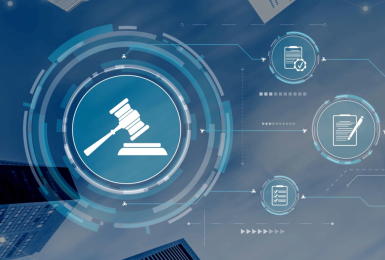The cost of cybercrime is expected to grow by 15 percent per year to inflict damages of up to $10.5 trillion by 2025. This startling projection underscores the importance of a robust cybersecurity strategy. But how do attacks happen, and what you can do to prevent them? This blog explores cybersecurity vulnerabilities, types of cyber attacks, and steps you can take to secure your personal and professional devices from hackers.
What Is Cybersecurity?
Cybersecurity involves protecting networks, devices, and sensitive data from unauthorized access. Today, almost every device is internet-connected, which increases the risk of hacking and data theft. By implementing cybersecurity best practices, you can reduce the risk of cybercrime and safeguard your information. The Cybersecurity & Infrastructure Security Agency recommends following these practices to keep your devices and data safe.
How Do Cyberattacks Happen?
Cyberattacks can occur in various ways and can be both targeted and untargeted. Some common types of untargeted cyberattacks include:
- Phishing scams, which tend to be delivered via email, encourage users to reply with sensitive information, such as bank account information or social security numbers
- Ransomware and malware, which are types of malicious software designed to infect devices and networks
- Waterholing, which involves creating a fake website mimicking a legitimate website to dupe visitors into sharing confidential information or making a purchase
Targeted examples of cyberattacks include:
- Spear-phishing, which is a more targeted type of phishing scam
- A bot attack
- Attacking equipment or software that's connected to the internet to disrupt an action or activity
Recognizing Cybersecurity Risks
Outside of having the right cybersecurity protection in place, one of the best ways to recognize risks is to be aware of the forms they take. For example, knowing the common types of attacks and their sources can go a long way toward preventing them from occurring.
Common Sources of Cybersecurity Risks
Cyberattacks are often perpetrated by cybercriminals, commonly known as hackers, who exploit technology for illegal profit. These individuals and groups, also called "threat actors," aim to cause damage by taking advantage of vulnerable devices and networks using targeted and untargeted methods.
Possible Impacts of Cybersecurity Risks
If your systems are at risk, a successful cyberattack can have various detrimental effects. These include:
- Identity theft
- Financial loss
- Compromised devices
- Business implications
- Bad publicity
Diving Deep Into Cybersecurity Vulnerabilities
What Constitutes a Cybersecurity Vulnerability?
According to the Computer Security Resource Center, a vulnerability is a weakness in any information system that could subject it to exploitation.
Types of Cybersecurity Vulnerabilities
Some of the most common types of cybersecurity vulnerabilities include:
- Misconfigurations of information systems that leave them subject to unwanted infiltration
- Unsecure application programming interfaces (APIs)
- Outdated software
- Unpatched software
A zero-day vulnerability, or discovered flaw unknown to the victim that a cybercriminal is taking advantage of
- Weak user credentials
- Stolen user credentials
Deciphering Cyberthreats and Attacks
Notable Examples of Cyberattacks
There have been several significant cyberattacks over the years. Some of the most notable include:
- The 2007 Estonia attack took dozens of Estonian websites offline in what's believed to be the first-ever cyberattack on an entire country. The attack lasted for 22 days.
- The 2013 Target data breach impacted 41 million customers' credit cards. Target paid $18.5 million in settlement fees.
- The 2017 Equifax data breach exposed the personal information of nearly 150 million Americans.
How Do Cybersecurity Vulnerabilities Become Exploitable?
Social engineering is the act of manipulating, influencing, or attempting to deceive to gain control over a system. Once a vulnerability is identified, hackers often take advantage. It underscores the importance of a robust vulnerability management strategy.
Why Is It Essential to Address Vulnerabilities?
Assessing and addressing cybersecurity vulnerabilities should be a part of any company's risk management strategy.
Vulnerability Assessment and Management
Assessing cybersecurity vulnerabilities must be done often to ensure your systems are protected. It involves analyzing the facility, servers, networks, and data security. Automated scanning, auditing, and application security testing are three surefire ways to assess for vulnerabilities.
Strategies for Addressing Cybersecurity Vulnerabilities
If you have identified a cybersecurity vulnerability, teams should act quickly to address it and implement temporary stopgaps to prevent a data breach. There are several strategies for addressing vulnerabilities, including:
- Securing systems and networks
- Implementing a data recovery strategy
- Updating software to the latest versions and installing new security patches
Differentiating Risk, Threat, and Vulnerability
The basic definitions of risks, threats, and vulnerabilities in cybersecurity are as follows:
- Risk: This refers to the potential for loss when a cyberattack occurs
- Threat: This is the potential for a vulnerability to be exploited
- Vulnerability: A vulnerability is a flaw or weakness that could be exploited.
Safeguarding Against Cybersecurity Risks and Vulnerabilities
While no business or individual can ever be 100 percent safe from a cyberattack, you can take various measures to minimize your risk.
Basic Cyber Hygiene Practices
Let's start with the basics. Cybersecurity hygiene requires awareness of common attacks and how cybercriminals attempt to access sensitive data. Cybersecurity and risk management are interdependent. Companies and organizations should regularly communicate how to avoid becoming a victim of a cyberattack to educate and empower their employees. Other basic cyber hygiene practices include:
- Use different user IDs and strong passwords for all programs or services you subscribe to. Enable multi-factor authentication.
- Keep software and applications up to date.
- Only connect to secure wireless networks.
- Check your bank account and credit report regularly.
Advanced Measures for Cyber Risk Mitigation
More advanced measures to mitigate cyber risk include:
- Monitoring computers and other devices for unauthorized users
- Encrypting sensitive data
- Regularly backing up data
- Properly securing internet routers
How Can Regular Updates and Patches Help Secure Your Systems?
The most updated versions of software and operating systems include patches that help safeguard devices from the latest known cyberattacks. This tends to be in addition to providing improved functionality and addressing any other known issues with performance.
Cybersecurity at Home: Protecting Your Personal Data
Cybersecurity isn't just something corporations need to address - it's a threat from within your home, too. You can utilize some of the same best practices at home as in the office (i.e., setting strong passwords, securing your internet router, etc.). Other measures include installing anti-virus software on your personal devices and updating them with the latest software.
Is Cybersecurity a Shared Responsibility?
Everyone in an organization has a role in keeping systems and devices safe, but it begins at the top. One way to keep your business safe from cyberattacks, avoid costly remediation efforts, and empower people with the information and knowledge to act is to attain a cybersecurity certificate through an accredited institute, such as Champlain College Online. Learn more about the program and contact us for more information.
You May Also Like
Request Information
Connect with our admissions team to learn more about Champlain College Online

Request Information
I acknowledge that, by clicking the "submit" button, I am giving my express written consent to Champlain College and its representatives to contact me about educational opportunities via email, text, or phone, at the phone number above, including my mobile phone, using an automatic dialer, or pre-recorded message. Message and data rates may apply. I understand that my consent is not a requirement for enrollment, and I may withdraw my consent at any time.






